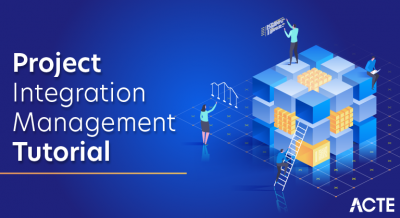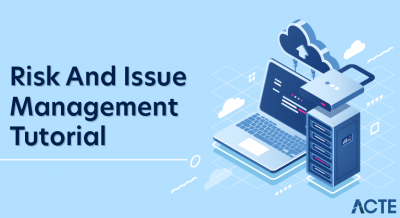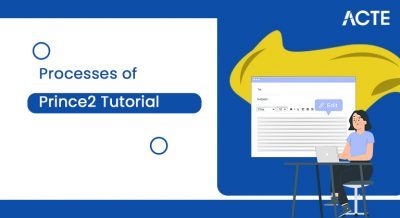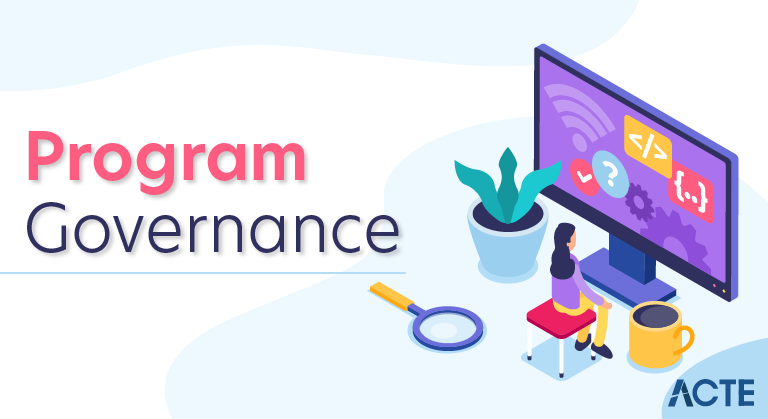
Project governance is an oversight function aligned with the organization’s governance model, and that encompasses the project life cycle. It provides the project manager and team with structure, processes, decision-making models and tools for managing and controlling the project while ensuring successful delivery of the project also.
Project governance is a crucial element, especially for complicated and risky projects.It defines, documents, and communicates consistent project practices to provide a comprehensive method of controlling the project and ensuring its success.
It contains a framework for making decisions about the project, defines roles, responsibilities, and liabilities for the accomplishment of the project, and governs the effectiveness of the project manager.
Project Governance Components :
According to PMI, eight project governance components add value to the real world:
Governance Models: Based on the project’s scope, timeline, complexity, risk, stakeholders, and importance to the organization, the organization should formulate a baseline of critical elements needed for project governance. There should be a primary tool that based on some of the above indicators decides what changes your governance framework needs to have and which components are compulsory.
Accountability and Responsibilities: Defining accountability and responsibilities is the core of the project manager’s tasks. Improper distribution of accountabilities and responsibilities will have a negative impact on the effectiveness of operations of organization. While defining both the factors, the project manager not only needs to define who is accountable, but also who is responsible, consulted, and notified for each of the project’s deliverables.
Stakeholder Engagement: While lying down the foundation of your governance plan, it is compulsory to understand the project ecosystem completely. Identifying all the stakeholders is the first step. If even one stakeholder is left out, it can disrupt the entire project and can have an adverse effect. You need to identify the stakeholders from a wide spectrum of sponsors, suppliers, the project team, government boards, business owners, and so on. The project manager has to define who the stakeholders are, what their interests and prospects are and most important, how to communicate with them.
Stakeholder Communication: Once all the stakeholders have been recognized and their interests and expectations have been described, the project manager needs to develop a communication plan. A well-devised communication plan delivers concise, efficient, and well-timed information to all stakeholders.
Meeting and Reporting: Once the communication plan is appropriately defined, the project manager ensures that the balance of meetings and reporting is right. It is essential to define the communication plan to ensure that each stakeholder understands the mode and content of the communication, owner, receiver, communication milestones, and decision gates. In addition, communication needs to be brief, precise and to the point.
Risk and Issue Management: Due to uncertainties and unpredictability associated with projects or programs, they are loaded with risks and issues. It is tough to predict what is going to happen, but it is necessary as lack of preparation will put the project team much further behind. At the initiation of any project or program, there needs to be an agreement on how to identify, categorize, and prioritize the risks and issues. The tact of handling the risk or issue is more important than the issue itself.
Assurance: Project assurance sees that risks and issues are managed efficiently and outlines the metrics that brings the delivery confidence of the project. One of the most essential components of assurance is creating the metrics that would give a view of the project performance.
Project Management Control Process: It sounds like the simplest component but actually is most difficult to execute. The monitoring and controlling process controls tasks and metrics related to the project and measures. Also, this is not a single-time assessment; the manager needs to measure the performance regularly and take action on any deviations on-time.
Why Is It Important?
- Project governance contains all they key elements that lead to a successful project.
- It is, however, important to tailor these elements to the needs of the company as project governance needs to be aligned with the business’ governance.
- It provides the framework for project management. Project management on the other hand focuses on delivering the project within budget, on time and at the right quality
So, Why Is It Important To Set Up A Project Governance Framework?
Governance in project management gives a structure to the whole process. It ensures that the project is aligned with business goals; and the right project is undertaken at the right time. During the lifetime of the project, good governance safeguards that the project stays on target, reducing the risk of failure.
Important Considerations For Successful Project Governance :
In order to ensure the success of your projects, it is important to have the following aspects in place:
- A clear reporting structure : Who is responsible for which decisions? Who receives which reports? Do the decision makers have all the information they need?
- A solid plan : This includes the time plan, but also how to manage resources, risk, change and quality.
- Engaged stakeholders : Your stakeholders are anyone affected by or participating in the project. The more engaged the relevant parties, the easier they are to work with. You can achieve this by keeping people informed and involved.
- Clear roles and responsibilities : These avoid miscommunication and duplicating of work.
Implementing lessons learned
- Striving for a culture of continuous improvement and trying to avoid frustration by repeatedly making the same mistakes
- It is also a part of project governance to decide the conditions under which a project needs to be abandoned.
- The development and implementation of project governance is key at the onset of the project.
- Project governance is essentially the “recipe” for the project manager on how to manage a project.
- Exhibit 1 defines the eight key governance components and how they are mapped into the project management Process Groups.
- These eight components are mandatory and must be explored and analyzed for the success of any project.
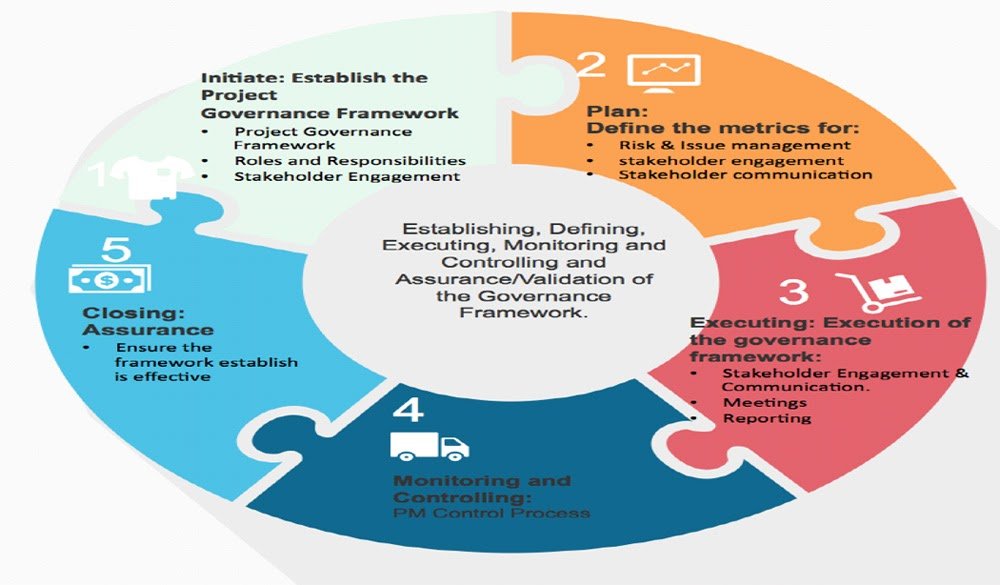
Exhibit 1: Cyclical project governance framework and eight underlying governance components.
Eight Governance Components And Their Applicability To The Real World
Let’s do a “double click” on the eight project governance components and the value they add in the real world.
Governance Models:
- When defining an adequate governance model that complements the organization, the project manager needs to take into consideration the amount of rigor that you want to incorporate.
- Overzealous governance models can often annoy the stakeholders, and an absence of project governance can lead to a lack of stakeholder engagement or false escalations.
- Establishing the right governance model is not a trivial task. However, based on experience, the organization should put together a baseline of key elements that are required for project governance based on the project’s scope, timeline, complexity, risk, stakeholders and importance to the organization.
- There should be a simple tool that does a quick analysis based on some of the above indicators defining how aggressive your governance framework needs to be and which components are mandatory.
Accountability and Responsibilities:
- Defining accountability and responsibilities is the core of the project manager’s tasks.
- Not having a definition for accountabilities and responsibilities will have a direct impact on the effectiveness of meetings, the change control process, risk assessment and the communication plan.
- When defining accountability and responsibilities, the project manager needs to define not only who is accountable, but also who is responsible, consulted and informed for each of the project’s deliverables.
Stakeholder Engagement:
- When establishing the foundation for your governance plan, understanding the project ecosystem is mandatory.
- The first step is to identify all the stakeholders. This seems like a daunting and asinine task but it is actually key.
- If one stakeholder is left out, this can derail the entire project and can have a detrimental impact.
- Stakeholders can span a broad spectrum. These include but are not limited to the project steering committee, PMO, sponsors, suppliers, government boards, the project team, business owners, and so on.
- Stakeholders are essentially anyone who can be impacted by the project deliverables. The project manager needs to define who the stakeholders are, what their interests and expectations are and most important, how to communicate with the stakeholders.
Stakeholder Communication and (5) Meeting and Reporting:
- The communication plan needs to be developed once all the stakeholders have been identified and their interests and expectations have been defined.
- A well-formulated communication plan delivers concise, efficient and timely information to all pertinent stakeholders.
- Once the communication plan is identified, the project manager needs to ensure that there is a right balance of meetings and reporting.
- This needs to be defined to ensure that each stakeholder understands the mode and content of communication, frequency, owner/receiver, communication milestones and decision gates. In addition, communication needs to be crisp, precise and to the point.
Risk and Issue Management:
- It is no secret that projects/programs are riddled with risks and issues.
- It is difficult to forecast what is going to occur, but a lack of preparation will put the project team further behind the eight ball.
- At the beginning of any project or program, there needs to be a consensus on how to identify, classify and prioritize the risks and issues.
- Quite frankly, how you handle the risk or issue is more important than the issue/risk itself.
Assurance:
- Project assurance ensures that risks and issues are managed effectively and defines the metrics that foster the delivery confidence of the project/program.
- A vital component of assurance is devising the metrics that would give visibility into the project performance.
- Some of the metrics include but are not limited to adherence to the business case; effectiveness of the change control and risk analysis process; the ability to monitor deviations in project scope, time, cost and schedule; and quality assessment and tracking accuracy of the project plan.
Project Management Control Process:
- This is the simplest component but the most challenging one to execute because of ongoing checks and balances.
- The monitoring and controlling process has purview of all tasks and metrics associated with the project and programs and measures performance against the baseline scope, budget, time, and resources.
- This is not a one-time assessment; the project/program manager needs to be constantly measuring the performance and taking timely action on any deviations.
Goals Of Program Governance
Program governance addresses a number of goals:
- Define and implement a structure within which to execute program management and administration
- Provide active direction, periodically review interim results, and identify and execute adjustments to ensure achievement of the planned outcome (which contributes to success of the overall business strategy)
- To achieve these goals, organizations define, agree upon, and implement structures within the program effort.
- There is no single “best” structure; rather, the structure should “fit” the enterprise’s organizational dynamics and practices.
- For example, within a consensus-oriented business culture, the program structure should provide for achieving, and continuously refining, consensus around major program outcomes.
- A program organizational structure that runs counter to components of the business culture will struggle to achieve momentum and forward motion.
- Active direction for the program is achieved through a combination of the right individuals, an effective structure for management and oversight, and a “set” of program roles and responsibilities.
- Roles and responsibilities should be defined and structured, with the needed outcomes of the program in mind, and to “fit” within the management philosophy and enterprise approach.
Program Governance Structure And Roles :
- To be effective, the individuals who direct the program and those who oversee its work activities must be organized, and their contributions must be modeled to ensure that authority and decision-making has a clear source, the work of management and oversight is efficient, and the needs for direction and decisions are all addressed.
- An organizational model should decompose all management and oversight functions, and describe the relationships among them. Figure 2 is a fairly typical model; and variations are possible.
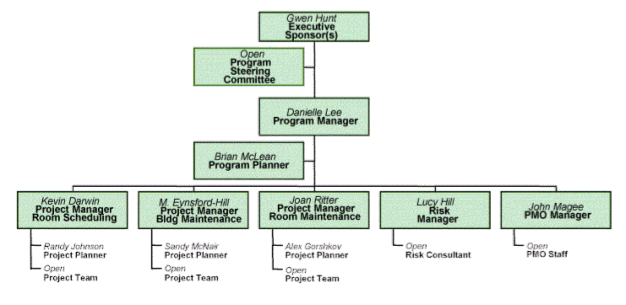
Figure 2: Sample program governance structure
Below, we will look at three roles shown in Figure 2:
- Executive sponsor(s)
- Steering committee
- Program director / manager
Executive Sponsor(s): Direction And Oversight
- A program needs one or more executive sponsors to ensure that it will make an appropriate and necessary contribution to the overall enterprise business strategy.
- Typically, this executive (Gwen Hunt, in our example) “owns” the major business segment that will be both the program’s principal beneficiary and accountable for achieving the program’s defined outcome(s) specified in the overall business strategy.
- For a major initiative that will impact and benefit multiple enterprise segments, multiple executives typically share this accountability. This might be structured in one of two ways:
- Multiple executive sponsors share responsibility for the program’s success and achievement of defined outcomes.
- One senior executive sponsor is designated as the final decision maker, and other executive sponsors serve as members of a steering committee. In addition to providing advice and impact assessments, these committee members are jointly responsible — with the senior executive sponsor — for a successful program outcome as well as desired outcomes in their respective business segments.
Steering Committee: Directing / Advising
- Large initiatives typically impact more than one business segment, and multiple segments often own different (but dependent or integrated) outcomes and results within the context of the overall business strategy and direction.
- Such initiatives require a governance mechanism through which all segment representatives can reach agreement on a direction that will result in desired outcomes for everyone.
- These programs also need a forum in which the representatives can raise issues and adjust direction, resources, or timing by consensus, as required.
- This mechanism is often a steering committee.
Steering committees can follow different models. For example, a committee might consist of:
- Executive-level sponsors who must reach consensus on issues, changes, and adjustments in order to proceed (consensus model)
- Executives and senior managers who are stakeholders for some aspect of the defined outcomes.
- Their role is to understand issues and needed changes, provide advice and assessment of potential impact, and make needed adjustments within their own responsibility area (consultative model)
- Representatives for the major business segments who are responsible for outcomes, or portions of outcomes, within the business strategy and direction.
- Their role is to monitor program progress, understand issues raised and adjustments made, assess potential impact within their own business segments, and carry back information about committee decisions to their respective business segments (advisory model)
Consultative and advisory models have a number of similarities. A key difference, however, is that in a consultative model, each business segment has significant ownership of the work effort and its results within that segment.
In the advisory model, that ownership is diminished. Information is carried back to the business segment, and any decisions, adjustments, and issue resolutions are expected to conform to the direction provided by the program governance body or structure.
The Program Director / Manager: Management And Integration
- It would be simple — and wrong — to assume that a program director / manager (to keep it simple, let’s use program manager) has nearly the same functions and responsibilities as those of a classic project manager.
- A program, as we know, consists of multiple projects, each with its own project manager. Does this, then, make the program manager a “super project manager?” Table 1 compares the two roles.
| Program manager | Project manager |
|---|---|
| Integrates efforts, continuously assesses and refines approaches and plans, ensures good communication. | Plans, organizes, directs, and controls the project effort. |
| Directs managers to achieve defined outcomes aligned with business strategy. | Manages for on-time delivery of specific products. |
| Acts as the implementation arm of the program sponsor(s) and / or steering committee. | Manages work within the project plan framework. |
| Manages managers. | Manages technical staff. |
As Table 1 shows, the program manager and project manager roles are quite different from one another. Whereas project managers typically focus on delivering a specific component, program managers typically focus on one or more outcomes that are business strategy components.
Conclusion
Establishing a governance framework is one of the most significant efforts required for program mobilization. The success of this effort has a direct correlation with the program’s potential for long-term success because governance enables the program work, addressing such needs as:
- Continuous linkage to enterprise business strategy and direction
- Clear and well-understood decision-making authority
- Effective oversight of (and insight into) program progress and direction, including the capability to identify and execute necessary adjustments in the face of internal / external events and changes
- Executive control over program evolution and outcomes
To operate, programs and program functions typically require multiple organizations that must integrate and interact effectively. Program staff must understand each organization’s value as well as the integration and interaction among different organizations — so that they can navigate these organizations to best advantage and accomplish their work. To be truly effective, the organizational structure of each project or other venture within a program must conform with the enterprise’s overall management philosophy and approach.


